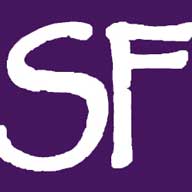Traditional and medical acupuncture.
If patients do not respond to conventional medical treatments or if all current options of conventional medicine are exhausted, a look at alternative methods can help...
The pros and cons of acupuncture (from Latin: acus = needle, punctio = stinging) have been discussed since the (re)discovery of this ancient method of healing. However, its positive effect, for example on pain patients, is also recognised in scientific circles. Even many dyed-in-the-wool orthodox medical practitioners, who are otherwise rather sceptical about alternative healing methods, attest to the healing effect of needle therapy. This was proven in 2002 in the GERAC study, the largest study on this topic worldwide with 250,000 people.
The physician Elaine Theaker, today medical director of the Hospital Parque Fuerteventura in Corralejo, was extremely frustrated when her patients did not respond to conventional medical treatments and were left with no other option. She therefore looked for alternative treatments and found a course in medical acupuncture from the British Medical Acupuncture Society.
"The procedures of medical acupuncture and traditional acupuncture are very similar, both in the method and in the choice of points. However, they differ in their approach to the patient. Traditional acupuncture views the person as a whole. It considers the dynamic processes in the body, which include physical, psychological and social aspects. In this therapy each patient is unique, his treatment is individual and focused on the degree of his well-being.
Medical acupuncture, on the other hand, uses biomedical diagnoses. Like conventional medicine, it targets directly the area that causes the problems."
It is mainly used for acute and chronic complaints such as headaches, back or neck pain. It also helps patients who either do not tolerate or do not respond to medication and is effective for eczema, ulcers, irritable bowel or menstrual pain. "It is important that before starting acupuncture therapy, other diseases that require medical treatment are excluded. Only then does it work as a healing method and does not cover up symptoms of a deeper and more dangerous problem." says Dr. Theaker.
She explains the effects of medical acupuncture with the help of neurophysiology. "Its effect is based on the stimulation of the external nervous system, which changes the way the central nervous system works. This results in its local effect on certain areas - depending on which spinal cord segment is involved - and on the general condition. The effects can be divided into anaesthetic (analgesic) and non-anaesthetic. These include wound healing, healing of nausea, addiction treatment, regulation of the autonomic nervous system and the immune system".
When asked why various studies also attest success to the so-called 'placebo' acupuncture, Dr. Theaker says: "Well, in my understanding, traditional acupuncture involves placing the needle at a fixed point on the meridians. Neurophysiology explains the success of medical acupuncture by the prick of the needle in the connective tissue. This means that results can also be achieved with "pseudo" acupuncture, in which points are chosen at random on the corresponding nerve level."
Since her acupuncture treatment has already helped many patients, both methods are probably effective.
(Edited from article by Heike Bludau)
Michel Robeers

